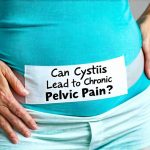Painful bladder syndrome, more formally known as Interstitial Cystitis/Bladder Pain Syndrome (IC/BPS), is a chronic condition causing bladder pain and urinary frequency/urgency. It significantly impacts quality of life, often leading to emotional distress alongside physical discomfort. Diagnosing IC/BPS can be challenging because its symptoms overlap with other conditions like urinary tract infections or endometriosis. There isn’t one single definitive test; diagnosis typically relies on excluding other possibilities and evaluating a patient’s medical history, symptom presentation, and potentially cystoscopy (a procedure to view the bladder). The exact cause remains unknown, but research points towards multiple factors possibly contributing, including nerve damage, immune system dysfunction, and genetic predisposition.
Living with IC/BPS requires a multi-faceted approach, and treatment is often individualized. There’s no ‘cure’ as such, but many therapies aim to manage symptoms and improve quality of life. This article will explore the medications commonly used in managing this complex condition, emphasizing that treatment plans are best developed in collaboration with a healthcare professional. It’s vital to remember medication is usually part of a larger strategy including lifestyle adjustments, physical therapy, and potentially other interventions.
Medications for Bladder Management
Managing IC/BPS often begins with addressing the symptoms directly – the frequent urge to urinate, bladder pain, and associated discomfort. Several classes of medications are used for this purpose, though their effectiveness varies greatly between individuals. Pentosan polysulfate sodium (Elmiron) was historically a first-line treatment, believed to help restore the protective lining of the bladder. However, its use has become more controversial due to potential associations with retinal damage in some patients, and routine eye exams are recommended for those taking it. Other medications focus on relaxing the bladder muscles to increase capacity and reduce urgency. Anticholinergics like oxybutynin and tolterodine achieve this by blocking acetylcholine, a neurotransmitter that causes bladder contractions. While effective for many, these can have side effects like dry mouth, constipation, and blurred vision. Beta-3 adrenergic agonists, such as mirabegron, offer another approach to bladder relaxation with potentially fewer anticholinergic side effects; they work by activating beta-3 receptors in the bladder, leading to smooth muscle relaxation.
Beyond directly targeting the bladder, medications addressing associated pain are crucial. Chronic pain often leads to sensitization, meaning the nervous system becomes more responsive to painful stimuli over time. Tricyclic antidepressants (TCAs), like amitriptyline and nortriptyline, are frequently used for this purpose—not necessarily as mood stabilizers, but for their ability to modulate nerve signals and reduce chronic pain. Similarly, some anticonvulsants, such as gabapentin and pregabalin, can help calm overactive nerves involved in pain perception. It’s important to note that finding the right medication, or combination of medications, is often a process of trial-and-error, guided by careful monitoring and communication with your doctor.
Pain Management Strategies
The role of pain management in IC/BPS extends beyond simply masking symptoms. A holistic approach recognizes the interplay between physical sensation, emotional well-being, and functional capacity. Non-opioid analgesics, like acetaminophen or NSAIDs (nonsteroidal anti-inflammatory drugs), may provide some relief for mild to moderate pain but are generally not sufficient for chronic IC/BPS pain. Opioids are typically avoided due to the risk of dependence and their limited long-term effectiveness in managing chronic pelvic pain conditions. Instead, a focus on neuromodulation – altering nerve activity – is often preferred. This can involve medications as described above (TCAs, anticonvulsants), but also includes other therapies like sacral neuromodulation which involves implanting a small device to deliver electrical impulses to the sacral nerves.
Beyond pharmacological interventions, understanding and addressing central sensitization is key. Central sensitization means that pain signals are amplified in the brain and spinal cord, leading to increased sensitivity even to non-painful stimuli. This explains why some patients with IC/BPS experience widespread pain beyond the bladder itself. Cognitive Behavioral Therapy (CBT) can be incredibly helpful in managing chronic pain by teaching coping mechanisms, relaxation techniques, and strategies for reframing negative thought patterns related to pain. Mindfulness practices and physical therapy focusing on pelvic floor rehabilitation are also valuable components of a comprehensive pain management plan.
Addressing Inflammation & Immune Response
While IC/BPS isn’t always characterized by obvious inflammation, there’s growing evidence suggesting an immune system component in many cases. Some researchers believe that the bladder lining can become damaged due to an autoimmune response or chronic low-grade inflammation. As a result, medications targeting immune modulation are sometimes explored as part of treatment strategies—though their use remains controversial and is often reserved for patients where other treatments have been unsuccessful. Antihistamines, like hydroxyzine, were historically used based on the theory that histamine released during allergic reactions could contribute to bladder irritation; however, evidence supporting their effectiveness is limited. More recently, research has focused on mast cell stabilizers, which aim to reduce the release of inflammatory mediators from mast cells—immune cells involved in allergic and inflammatory responses.
The role of diet in managing IC/BPS symptoms cannot be overstated. Many patients find that certain foods and beverages exacerbate their symptoms, leading to what are known as “flare-ups”. Common culprits include caffeine, alcohol, citrus fruits, spicy foods, artificial sweeteners, and acidic beverages. Identifying and eliminating these trigger foods can significantly reduce bladder irritation and pain. Furthermore, supplementation with certain nutrients—like vitamin D or omega-3 fatty acids—may help support immune function and reduce inflammation. It’s important to note that dietary changes should be individualized and guided by a healthcare professional.
Emerging Therapies & Future Directions
Research into IC/BPS is ongoing, and new therapies are constantly being investigated. One promising area involves exploring the role of the microbiome – the community of microorganisms living in our gut—and its impact on bladder health. There’s evidence suggesting that imbalances in the gut microbiome can contribute to inflammation and exacerbate IC/BPS symptoms. Consequently, interventions aimed at restoring a healthy gut microbiome—such as probiotic supplements or dietary changes—are being explored as potential treatments. Another area of interest is gene therapy, which aims to correct genetic defects contributing to bladder dysfunction.
Another exciting development is the use of intravesical (directly into the bladder) therapies. These involve instilling medications directly into the bladder, allowing for higher concentrations at the site of inflammation and reducing systemic side effects. Heparin, a blood thinner, has been used as an intravesical treatment based on its anti-inflammatory properties. Similarly, lidocaine, a local anesthetic, can provide temporary pain relief when instilled into the bladder. As research progresses, we are likely to see more targeted and effective therapies for IC/BPS, offering hope for improved symptom management and quality of life for those living with this challenging condition. The future of treatment will likely involve personalized medicine approaches tailored to each patient’s unique characteristics and underlying mechanisms contributing to their symptoms.





















